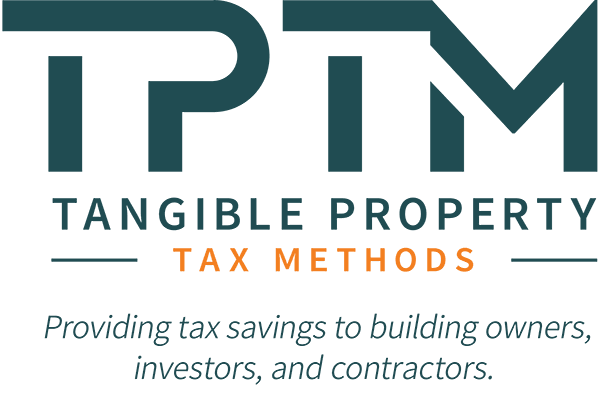Demystifying Complex Tax Method Changes for Commercial Property Owners
by Eric P. Wallace, CPA | Cost Segregation, partial asset disposition

If you’re a commercial property owner and haven’t reviewed your depreciation schedule or fixed asset accounting methods in the last few years… you may be leaving money on the table.
While most real estate investors focus on acquisition strategy and NOI, few realize that accounting method changes—especially those tied to depreciation and repair expenses—can unlock powerful tax savings. Even better? Many of these changes are automatic and can be implemented proactively without triggering an audit.
Welcome to the world of tax method changes, where understanding a few key IRS rules can transform your approach to real estate taxation.
What Is a Tax Method Change?
A tax method change allows a taxpayer to change the way certain income, expenses, or deductions are reported for tax purposes. For commercial real estate owners, this typically applies to:
- Depreciation schedules
- Treatment of repairs vs. improvements
- Application of safe harbors under Tangible Property Regulations (TPRs)
- Partial Asset Dispositions (PADs)
Many of these changes are made using IRS Form 3115, which also includes a Section 481(a) adjustment to reconcile prior year misstatements or missed deductions.
Why CRE Owners Should Care About Tax Method Changes
Most property owners are depreciating assets using the default 39-year schedule—even when parts of the property could legally be depreciated over 5, 7, or 15 years. Others continue depreciating components (like an old HVAC system or roof) years after they’ve been removed or replaced.
Here’s where tax method changes shine:
They allow you to correct these errors, take a catch-up deduction, and maximize depreciation—all in the current year.
Common Scenarios Where Method Changes Help
You may need a tax method change if:
✅ You renovated or improved a property but didn’t adjust depreciation.
✅ You replaced an asset (e.g., roof, HVAC, flooring) but didn’t write off the old component.
✅ You’re still depreciating tenant buildouts long after lease expiration.
✅ You haven’t performed a cost segregation study on a property acquired in the last 10 years.
Meet IRS Form 3115: The Gateway to Fixing Past Mistakes
IRS Form 3115, Application for Change in Accounting Method, is the official form used to request (or declare) a method change. It includes:
- A description of the method change
- Identification of the type of change (automatic or non-automatic)
- The Section 481(a) adjustment, which calculates the cumulative impact of the change on prior years
For most CRE-related changes—like depreciation, repairs, or TPR compliance—Form 3115 is filed automatically with your tax return. No prior IRS approval required. (🎉)
The Power of the Section 481(a) Adjustment
When you switch accounting methods, the IRS lets you reconcile past discrepancies through a Section 481(a) adjustment—a one-time deduction (or addition) that reflects the cumulative effect of the change.
Example:
If you should have written off a $120,000 HVAC system in 2021 but didn’t, you can file a method change this year and claim that $120K as a deduction now—without amending old returns.
That’s real cash flow, right when you need it.
Key Method Changes for Commercial Property Owners
Here are a few examples of method changes relevant to CRE investors and owners:
|
Method Change |
Description |
|
Depreciation Method |
Reclassifying components into shorter recovery periods (5, 7, 15 years) |
|
Repair vs. Capitalization |
Applying safe harbors to deduct recurring repairs instead of capitalizing them |
|
Partial Asset Disposition (PAD) |
Writing off the remaining basis of replaced assets |
|
De Minimis Safe Harbor |
Expensing low-cost assets under $2,500 (or $5,000 with audited FS) |
|
Routine Maintenance Safe Harbor |
Deducting ongoing maintenance as an expense rather than a capital item |
How Cost Segregation Studies Support Method Changes
Tax method changes and cost segregation go hand-in-hand.
A cost segregation study breaks down your building into component parts that can be depreciated faster. But many owners don’t realize that they can use method changes to retroactively apply a cost seg study—even on properties placed in service years ago.
This means you can catch up on years of missed depreciation in the current year using Form 3115.
👉 Request a Free Cost Segregation Analysis
Real-World Example
Property Type: Office Building
Scenario: In 2020, the owner replaced the entire lighting system and interior partitions—but continued depreciating the original components.
Solution: Filed a tax method change under PAD rules and took a Section 481(a) adjustment.
Result: $92,000 in current-year deductions—without needing to amend past returns.

How to Know If You Qualify for a Method Change
The IRS provides automatic accounting method changes for most real estate depreciation corrections. You likely qualify if:
- You’ve replaced any part of your building since 2014
- You’ve never filed Form 3115
- You haven’t reviewed your depreciation or asset schedules recently
- You’re unsure if your CPA has applied TPR correctly
What to Do Next
- Don’t panic. Many businesses miss these opportunities—it doesn’t mean you’re out of luck.
- Partner with a specialist. TPTM has decades of experience handling method changes and cost segregation with full IRS compliance.
- Start with a free consultation. We'll review your current asset schedule and determine if a method change could yield immediate tax savings.
👉 Schedule Your Free Consultation
Let’s Uncover What You’ve Been Missing
Tax method changes are one of the most overlooked tools in real estate tax planning. With the right strategy—and the right team—you can fix past mistakes, uncover missed deductions, and make your depreciation work harder for your business.
Don’t let inertia or confusion stand in your way. The IRS has already created the pathway—you just have to file.
Ready to see what a tax method change could mean for your bottom line?

